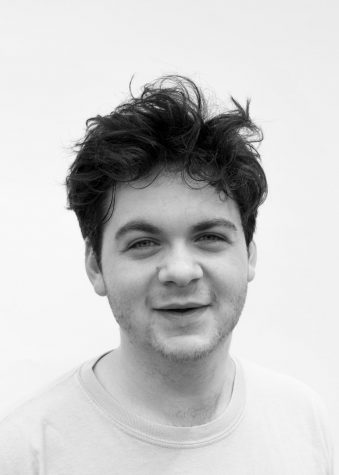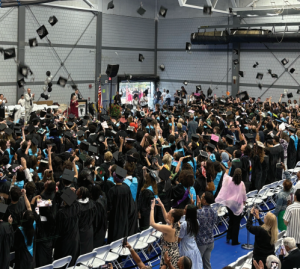In 2020, Increasingly Popular Club Sports Are Taking a Toll on Athletes
Playing on club teams has become a more popular option for student athletes in recent years.
January 7, 2020
In recent decades, the path of a high school athlete has transformed into a much more time demanding and complicated process. Pressured to earn athletic scholarships to college, many student-athletes are encouraged to specialize in a particular sport, devoting over eight months of the year to that sport. With club coaches demanding more from their athletes as well, the days of multi-sport professional athletes like Barry Sanders and Bo Jackson seem to be over.
There are several reasons that student-athletes choose specialization and club sports, a common one being a desire for college scholarships. Young athletes fixated on the pursuit of a college scholarship see this as the only path to achieve their goal. In a study conducted by the National Institute of Health, researchers found that over two-thirds of college athletes specialized in a sport during their childhood and adolescence. The skill and exposure gained from club sports and specialization can lead to valuable college scholarships, saving students and their families tens of thousands of dollars in tuition. Nevertheless, questions remain over whether the benefits of club sports and the increased specialization it encourages outweigh their downsides.
Fanny Lodge, a senior at CRLS, is one of those athletes who has chosen to specialize in her respective sport, soccer. In addition to limiting her time playing other sports, such as lacrosse, Lodge no longer plays soccer for the CRLS girls varsity team. “I was in this league called the Development Academy and they didn’t let you play high school soccer. And also, you don’t get any college exposure at the [high school] level,” she explained. In regards to her experience playing club soccer, she said, “I loved it, the [players] are my best friends, we love the coach.” Through club soccer, Lodge was able to gain college recognition, which was her primary goal when specializing. It was at a club soccer showcase where she was noticed by the Middlebury College coach, and she recently committed to play for the school.
For Lodge, the burden of club soccer was mostly the result of the many school days she missed in order to play in tournaments across the country for her club team. However, missed days of school are only one concern. Cost and health stand out on a long list of difficulties that can be associated with club sports and specialization.
The taxing nature of club sports can be seen in the sizable price tags that come with being on a club team. According to a TD Ameritrade report on youth sports in 2016, parents typically pay between $100 to $500 a month for their children to play on an elite club sports team, which can add up fast for athletes playing year-round. At the highest levels of club sports in America, the potential financial strain is even more evident. Along with the club fees, players are expected to pay travel costs for multiple trips out of state in order to enter the most prestigious tournaments. Ian Rauh ’21, who plays club soccer and aspires to play in college, understands the huge cost that club sports require. But he also notes, “It depends on how committed you are. If you want to excel at the level that you are playing at then I feel like [playing club sports] is worth it. If you are really committed to playing college soccer, it is worth it.”
The pricing of high-level clubs has been a difficulty for many families and has raised questions of equity in youth sports. Often only higher-income families can afford to pay to put their children on these teams, leaving less fortunate athletes to play in less competitive, local leagues. Phil Fousek, coach of the CRLS boys varsity soccer team and the club soccer team Sachems FC explained that the new era of club sports and its demographics seem to skew very heavily towards those that are financially well-off: “It’s people who definitely have the means to be able to play from a financial standpoint [that] are definitely getting that advantage [to play club].” Although most clubs offer partial scholarships for families with certain incomes, and Fousek sees himself as “fortunate” to be at a club offering financial help, most of those scholarships are difficult to obtain, and full scholarships are even more exclusive. Youth sports have not always been this expensive, including as recently a decade ago. In 2017, Time reported that youth sports is a now a $15.3 billion industry, a 55% increase from its value in 2010.
The demanding financial nature of club sports has not been the only driving force behind the boom in sports specialization seen across the nation, as most club coaches demand complete devotion to their teams. The large pressure placed on athletes has led to a large number of players selecting one sport when they are young, and for some of the highest level athletes such as Lodge, forgoing high school sports for their club team. Many athletes at CRLS—not just Lodge—have played club sports, which demonstrates the shift from the high school-sport dependent athlete of years ago to the new club-oriented player. Lance Dottin, coach of the CRLS boys varsity basketball team and former student here at CRLS, experienced the youth sports system decades ago, and in his eyes, youth sports have completely changed. Dottin told the Register Forum that there was no pressure on him to specialize when he was younger: “[Youth sports] are very different. Playing multiple sports was encouraged. It was encouraged by your parents. It was encouraged by your coaches.” He continued, “[Playing multiple sports] is what kids should be doing. Kids should be playing multiple sports. The specialization of sports in many ways is ruining sports.” A study conducted by the National Institute of Health found that about 45% of high school-aged athletes specialize in a particular sport, and many of those athletes also play club sports. Specialization not only requires financial and time-related sacrifices but can also put athletes at a higher risk of injury. A study by the University of Wisconsin-Madison found that young athletes who specialize in sports are 81% more likely to experience overuse injuries.
Laura McGaffigan, a physical therapist as well as the mother of senior twins Thomas and Andrew McGaffigan, who have both played club sports, commented, “To specialize in one sport at an early age is really bad for [athletes’] muscles.” According to McGaffigan, specialization can cause athletes to “overdevelop muscles that [are] worked all the time [leading to] tight[ness] and inflexibility in the muscles not being used.”
Despite trends in the direction of specialization, multi-sport athletes are still fairly common. These athletes choose not to specialize because of their unwillingness to give up sports that they enjoy playing as well as to not jeopardize their health. Solomon Hearn ’20 is a multi-sport athlete is an example of this kind of athlete. A Boston Globe all-scholastic in volleyball and the captain of the CRLS varsity boys basketball team, Hearn has excelled as a two-sport athlete. Hearn explained why he continues to play two sports, saying, “I really enjoy playing both sports, getting to the best that I can be. It’s at the point where I don’t want to give [either sport] up and it would be a waste if I did too.” Distinctively, Hearn is not letting being a two-sport athlete hold him back from playing at the college level either: “I’ve been talking to coaches for [Division III] basketball,” and he is still not ruling out playing volleyball in college too.
The culture of greater participation in club sports and of increased specialization contrasts the days when youth sports meant meeting up at the court to play or playing against a fellow middle school in Cambridge. In reality, few high school athletes will go on to play college athletics, and far fewer will ever be able to make a career out of their sports. Regardless, even if athletes are able to play at the next level, the pressure placed on their bodies from the demands of club sports could have lasting impacts on their lives in an out of sports.
This piece also appears in our December 2019 print edition.












